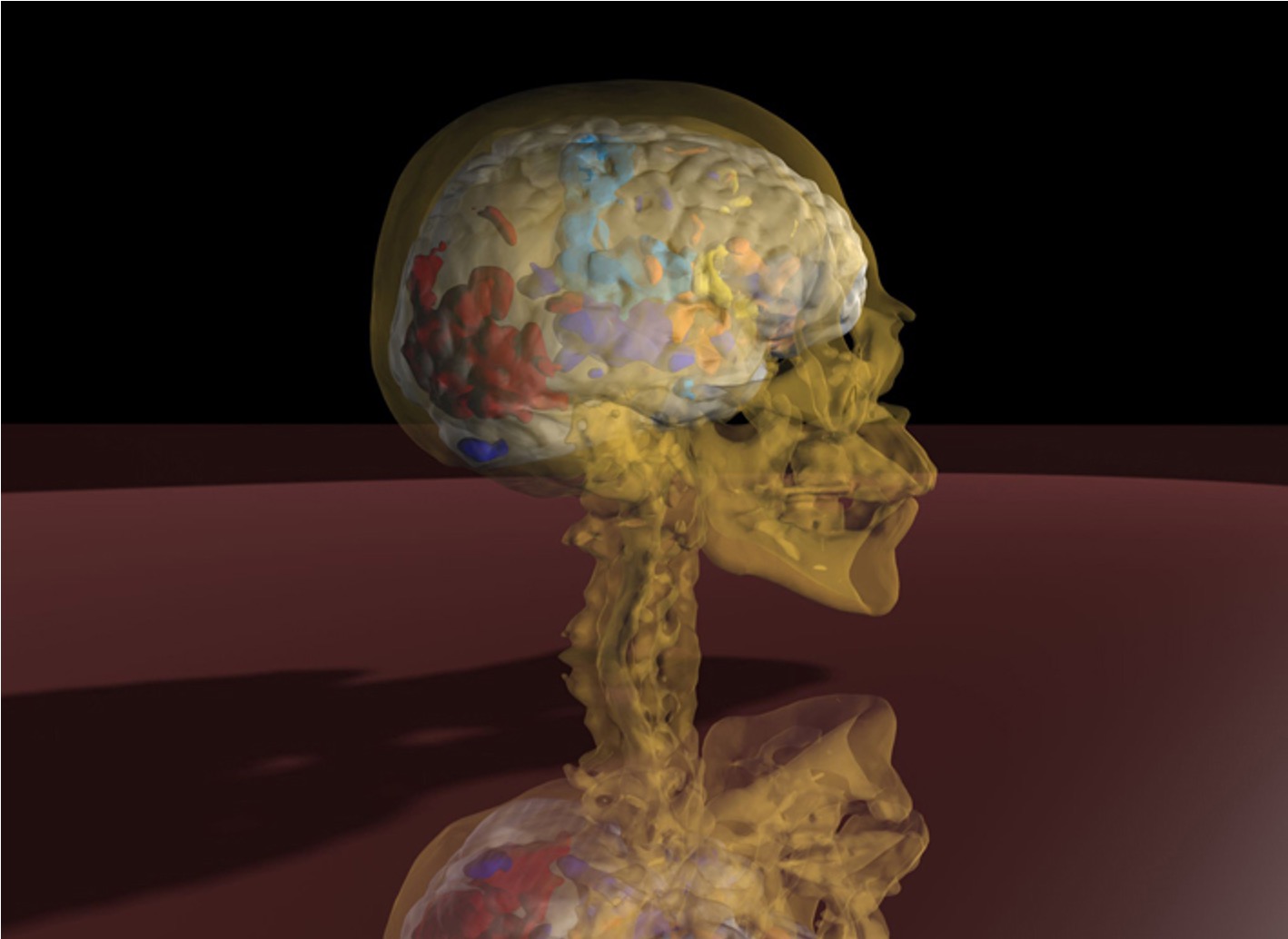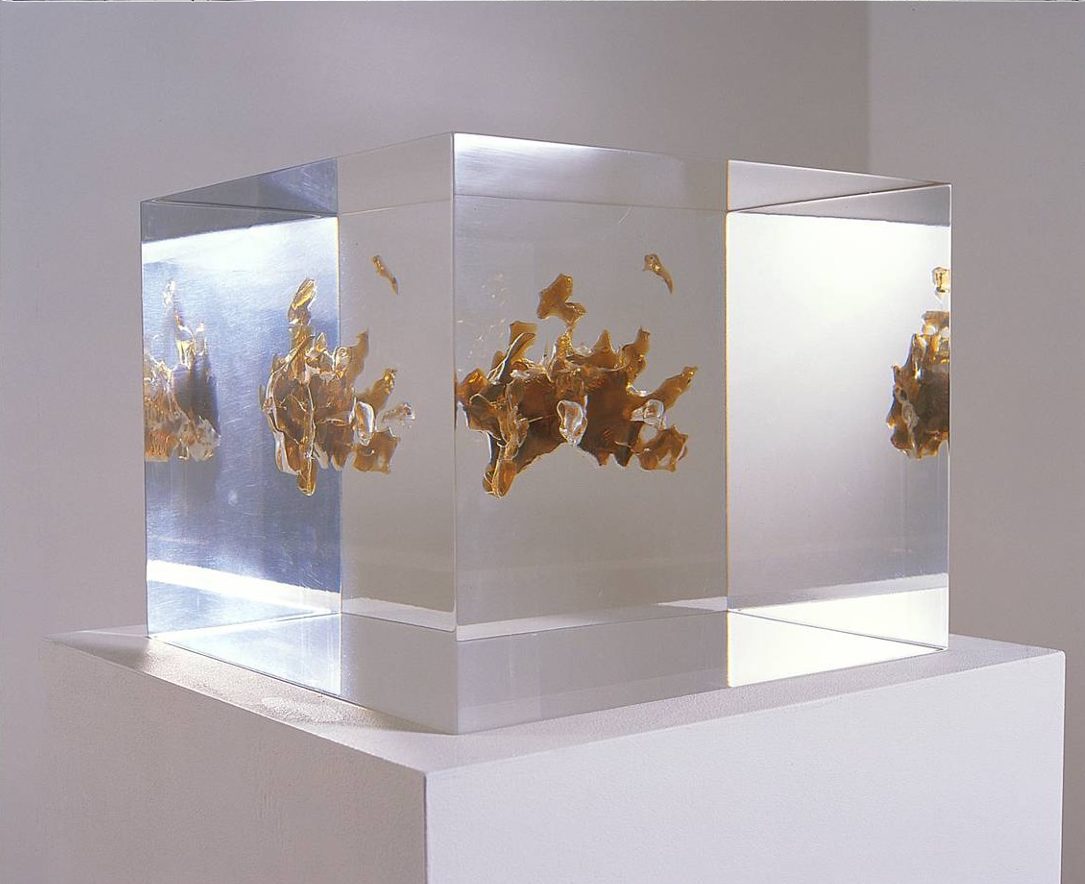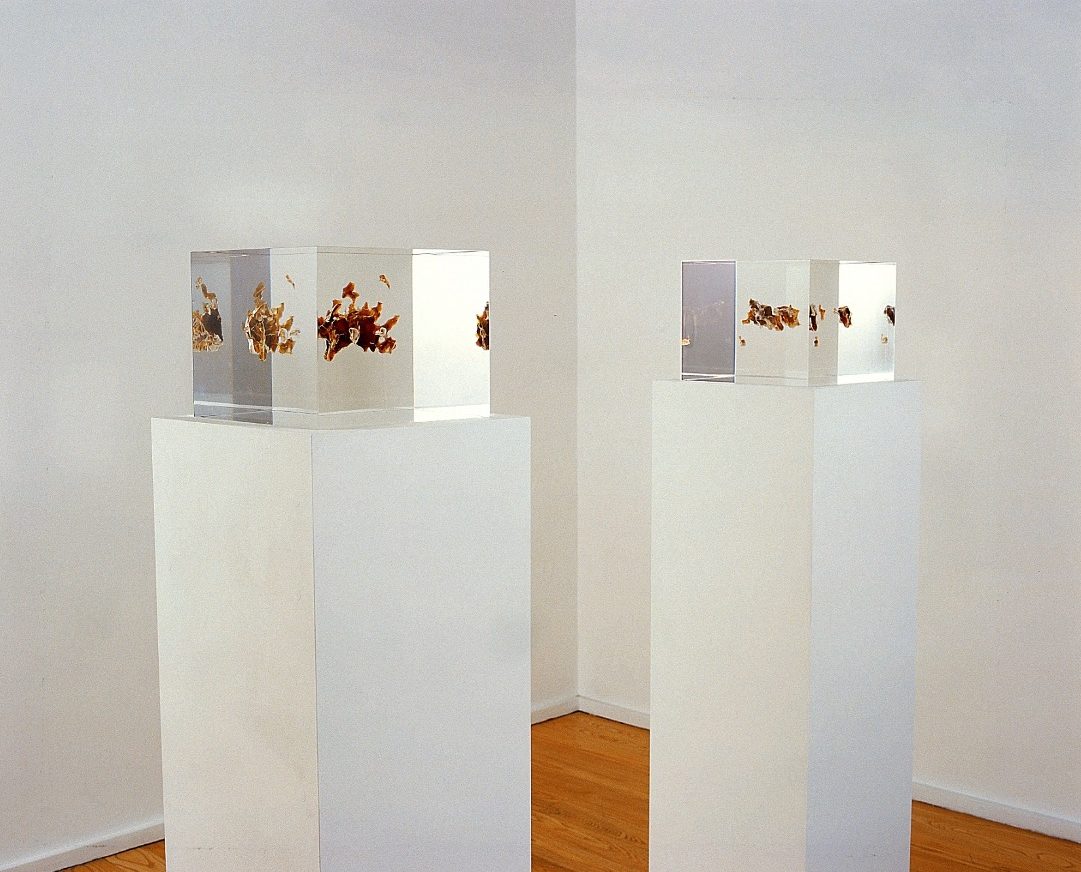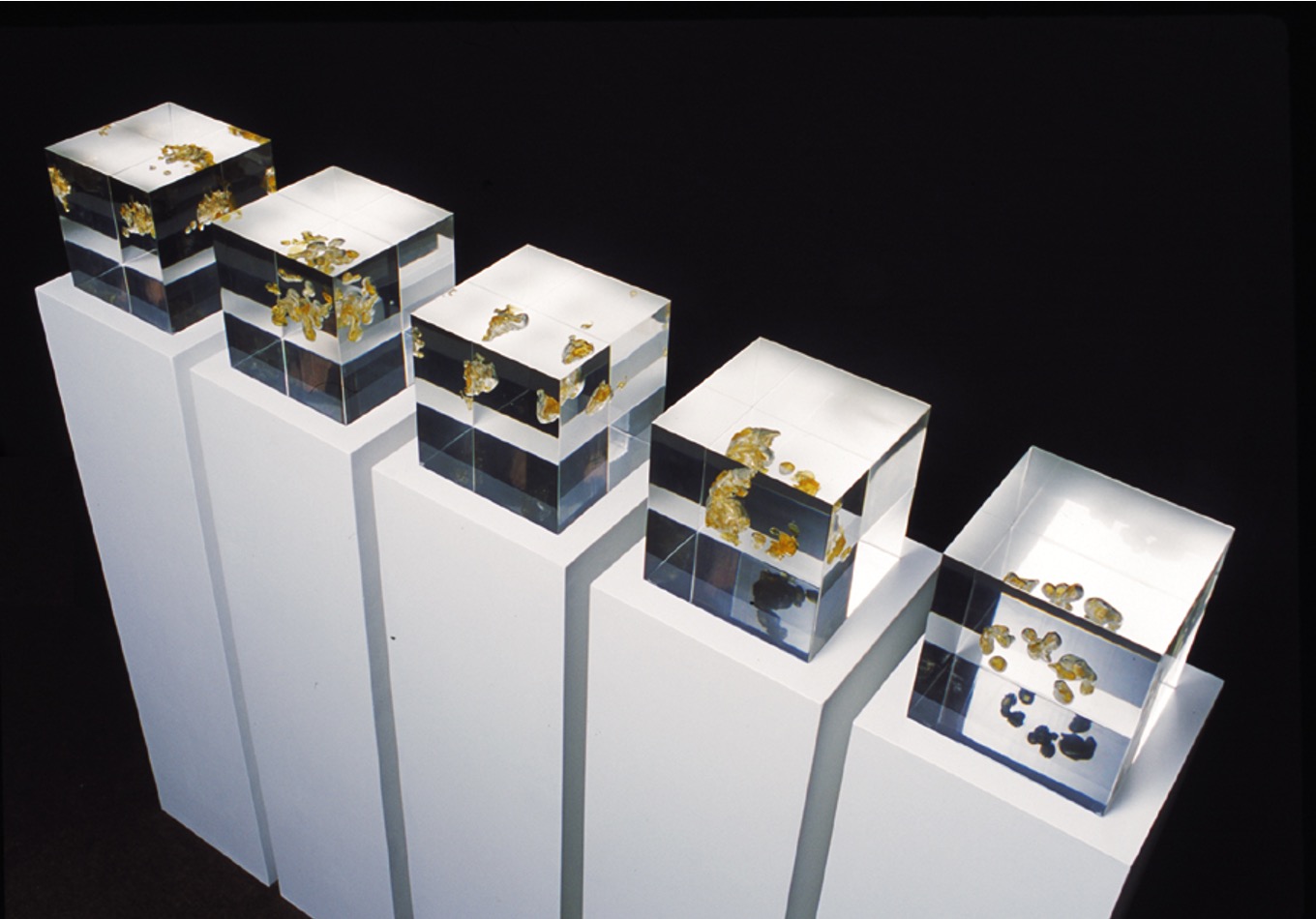PLEASURE/PAIN
Rapid prototyped sls on a mirrored plinth
“The latest collaborative artwork from neuroscientist Morten Kringelbach and artist Annie Cattrell reveals – and revels in – sensory dialogues in the brain… Their new sculpture Pleasure/Pain – which I deliberately attribute to both of them – models the structural connections of a small region in the brainstem, the periaqueductal grey, as revealed by a method of magnetic resonance imaging called diffusion tensor imaging. The piece explores the links that might be activated during sensations of pleasure and pain.
… Cattrell and Kringelbach are telling us that art can be as rationally founded as Renaissance theorists insisted, and that science can be as suggestively open as the act of looking itself. ”
(Professor Martin Kemp, Nature 2010, 465: p.265)
DOBBELTVIOLIN
Træ, (rubinrød og sort) metal og glas, 210 x 210 x 120 cm
Morten Kringelbach, Katarina Lundeberg, Susanne Milne, Gitte Sommer
Scene of the crime. Exhibition at “Politigården” (National headquarters of the police) in connection with Copenhagen Cultural Capital’96. Project with participants from the School of Sculpture and the School of Architecture, Royal Danish Academy of Arts.
Udsat for filtreringens tyngde
Kaster rummet skygger af fravær
Over erindringens labyrint,
Hvor den tabte tid udskriger
Den blodrøde hests smerte
Maskine og maske,
Blikkets metamorfoser
En forførelse under sjælens spejl
SENSES
Rapid prototyped resin in acrylic, 60x60x60 cm (in Wellcome Collection).
“Cattrell is seeking to grasp the “physicality of consciousness” by exploring the “delicate dialogue between the exterior world and our individual blueprint”. She models this dialogue by casting in resin the morphological patterns of brain activity that correspond to the stimulation of each of the five senses. Neural activity is transformed into glistening apparitions that float in the cranial cavity like a kind of mental plasma. The refractive and reflective crystalline cubes, within which the skull is by implication inscribed, optically slice the golden configurations into shifting interplays of plans and elevations as the spectator moves past them.
… In imaging the brain by casting and modelling, Cattrell stands in a long line going back to Leonardo da Vinci, who cast the ventricles of an ox brain, believing that the fluid in the ventricles was the medium within which the mental faculties operated.”
(Professor Martin Kemp, Nature 2003, 424: p.18)
















